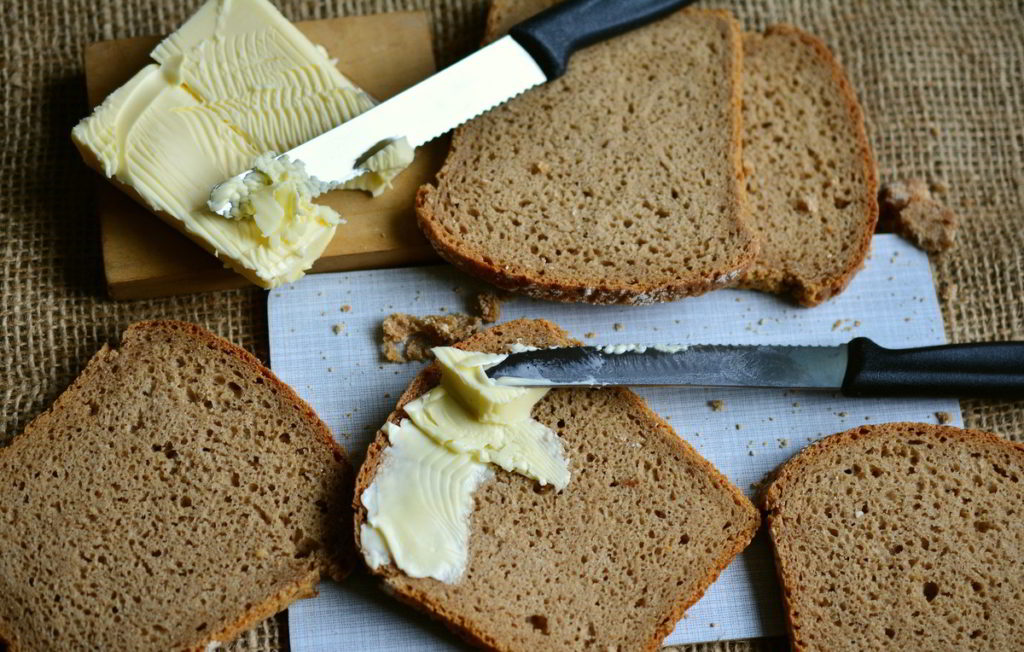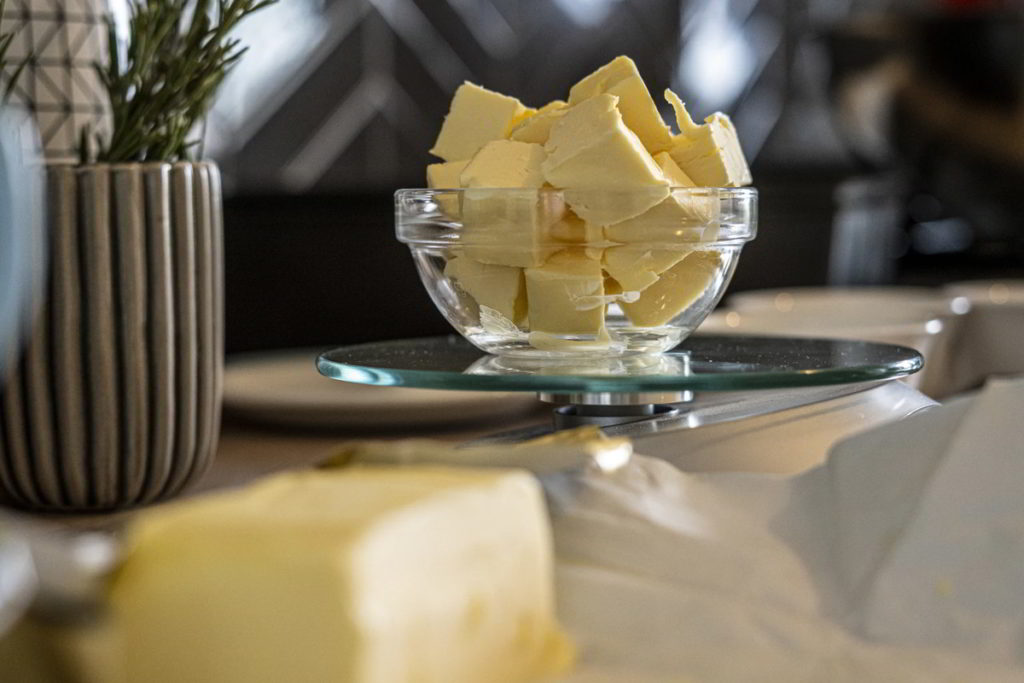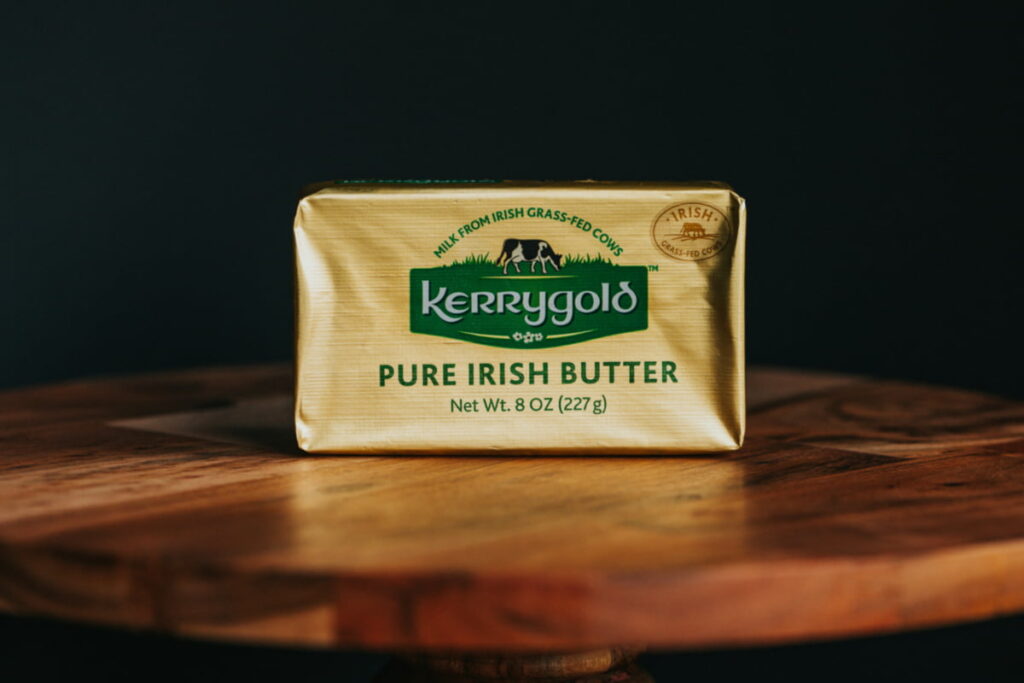
You never realize how stubborn butter can be until you’re staring at a cold stick that refuses to budge, whether you’re trying to spread it on toast or mix it into cookie dough.
Maybe it’s fridge-cold, maybe it’s frozen from that “I’ll stock up and save” moment. Either way, waiting an hour isn’t an option. The good news? You don’t have to.
There are quick, practical ways to soften butter quickly or thaw frozen butter without melting it into a mess.
I’ve learned these methods along the way, through impatience, mistakes, and a lot of toast, and these six actually work (and work fast).
Why Butter Temperature Matters More Than You Think

Let’s get something out of the way: “room temperature butter” isn’t a suggestion, it’s a precision target.
Perfectly softened butter sits around 65°F (18°C), soft enough that your finger leaves a slight dent but firm enough that it doesn’t smear like cream cheese.
That texture is what lets sugar trap air during creaming, the key to fluffy cakes, chewy cookies, and tender crumb.
Too cold, and you’ll overmix trying to break it down. Too warm, and it collapses under the sugar, leading to flat, greasy cookies.
King Arthur Baking explains that even a few degrees’ difference changes how your dough behaves, butter’s structure is what carries air and moisture evenly through your batter
The “Cold from the Fridge” Problem: How to Soften Butter Quickly
If your butter’s cold but not frozen, you’ve got it easy. It just needs a little warmth and patience (not my strong suit).
Here’s what actually works, tested, re-tested, and mildly cursed at along the way.
1. The Hot-Glass Trick (My Go-To Fix)
It’s the classic for a reason, and honestly, I have no idea how I didn’t know about it sooner. A friend showed me, and now it’s my go-to. Simple, smart, and kind of life-changing.
How it works:
Fill a tall glass or mug with boiling water, let it sit for 30 seconds to heat up, pour the water out, and flip it over your stick of butter.
The steam trapped inside warms it gently and evenly. No melting, no weird soft-on-the-outside, frozen-in-the-middle texture.
Timing: 5–7 minutes.
When to use it:
When you’re about to cream butter and sugar and you just realized the butter’s still too firm.
2. Cut It Into Cubes (The Lazy-But-Efficient Way)

This is my default if I remember the butter just late enough to be annoyed.
Cut the stick into ½-inch cubes and spread them out on a plate. The increased surface area helps it soften way faster at room temperature.
At about 70°F, you’ll have soft butter in 15–20 minutes, perfect for creaming or spreading.
3. The Room-Temperature Method (If You Can Wait)

Sometimes the old-school way still wins. Just leave the butter out on the counter. It’ll soften evenly, keep its structure, and taste exactly as it should.
Cutting it into cubes speeds things up a bit, but otherwise? This one just takes patience, about 30 to 45 minutes, depending on how warm your kitchen is.
When the Butter’s Frozen Solid: How to Thaw It Fast

Here’s where things get dicey. Frozen butter is basically a butter rock. You can’t just leave it out and hope. (Ask me how I know.)
You need either mechanical force or indirect heat, anything gentler will take hours
4. Grate It Like Cheese (Ridiculously Effective)
Yes, it sounds strange, but it’s brilliant.
Take a box grater and run the frozen butter over the large holes. You’ll get thin curls that soften almost instantly at room temperature.
I picked this up after seeing bakers on Reddit swear by it, and they’re right: the butter thaws within minutes, and those tiny pieces incorporate beautifully into dough.
5. Pound or Roll It Flat (Therapeutic and Fast)
Grab a rolling pin or a heavy pan. Slip your frozen stick into a sealed zip-top bag and give it a few firm smacks until it’s flattened.
This method is surprisingly satisfying and works in about 5 minutes. You’ll feel the butter loosening as the edges soften from the friction.
I’ve used this trick before laminating pastry, it gives you flexible, cold butter that behaves itself.
6. The Microwave “Incubator” Trick (Safe and Genius)
If you still want to use the microwave, the folks over at Sally’s Baking Addiction introduced us to a microwave hack that will get the butter defrosted quickly, without fear of it melting.
How It’s Done:
- Fill a microwave-safe cup/Pyrex jar with water.
- Microwave till it is almost boiling (you will start to see the bubbles to start to form at the side of the container/cup)
- Quickly remove the now hot cup of water from the microwave and place the frozen butter inside the microwave.
- The radiant heat trapped inside the microwave will quickly thaw the frozen butter in about 10 minutes.
- You should check at about the 5-minute mark, to ensure that the butter is thawing and has not melted.
Choosing the Right Method: A Quick Comparison
| Starting Point | Time | Best Method |
| Fridge-cold | 5–7 min | Hot glass |
| Fridge-cold | 15–20 min | Cubes on plate |
| Fridge-cold | 10 min | Water bath |
| Frozen solid | 3–5 min | Grating |
| Frozen solid | 5 min | Rolling pin |
| Frozen solid | 10 min | Microwave incubator |
Mistakes I’ve (Repeatedly) Made So You Don’t Have To
- Microwaving on full power. You’ll get an oil slick, not butter. Always use indirect heat or short bursts.
- Letting it sit too long near the oven. The bottom liquefies while the top’s still solid. Keep it rotating.
- Assuming all butter behaves the same. European butters (like Kerrygold) soften faster due to higher fat content (82–84%) compared to standard American (80%), meaning they hit “room temp” sooner.
- Re-freezing butter. Once thawed, don’t refreeze, you’ll damage its structure and create separation.
When Not to Soften Butter
Butter isn’t always supposed to be soft.
If you’re making puff pastry, pie crusts, or biscuits, the butter should stay cold so it steams in the oven and creates flaky layers.
In those cases, grated or pounded butter is your friend. Soft butter equals dense pastry.
How to Never Panic Over Cold Butter Again
At this point, I’ve tried every hack under the sun, from hairdryers (don’t ask) to sunlit windowsills (even worse).
But these six? They actually work.
If you’re mid-bake and just realized your butter’s frozen, start with the grater or the microwave incubator.
If it’s just cold, go for the hot-glass trick or cubes.
Butter behaves predictably when you give it gentle, even heat, and once you understand that, you’ll never panic over a solid stick again.


